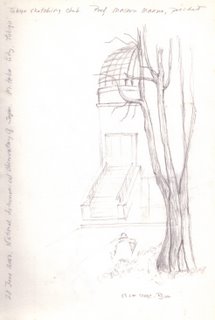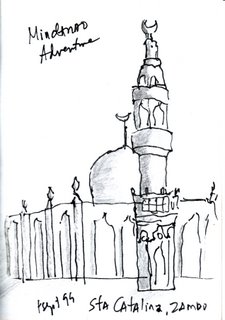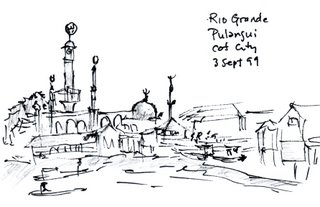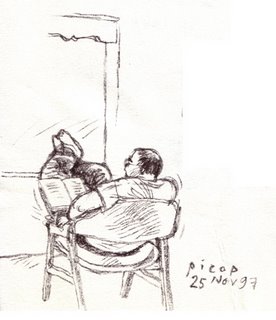Friday, June 30, 2006
Thursday, June 29, 2006
Tuesday, June 27, 2006
Monday, June 26, 2006
tokyo sketching club at mikata observatory

the observer observed. one fine weekend, the tokyo sketching club visited mikata about half an hour train ride from tokyo to sketch the observatory near the train station. the club was founded by dr. maeno of the tokyo university school of architecture and design. these senior citizens and enthusiasts sketch heritage sites to increase public awareness of them. thanks to the club, the tokyo main station survived the wrecking ball.
Sunday, June 25, 2006
memories of japan: leaf of the momiji or japanese red maple

this is one of japan's most exquisite tree. leaves start as rusty red and mature to green. momiji can easily be shaped and trained to make bonsai. as a member of the maple family, momiji undergoes seasonal transformation, making the hills near osaka and kobe, where i first saw japanese maple, burst into a palette of autumn colors. momiji leaves are used to wrap sushi kyoto-style. for shaping the rice, soft momiji leaves are laid inside a long and narrow box, then the ingredients of sushi are placed above the leaves, the leaves rolled over and the whole preparation compacted by a wooden cover. near osaka, momiji leaves are dipped in tempura batter, deep fried and sprinkled with sugar and cinnamon for an unusual and seasonal snack.
momiji the stuff of art—horticultural and culinary
babaylan at san joaquin, iloilo
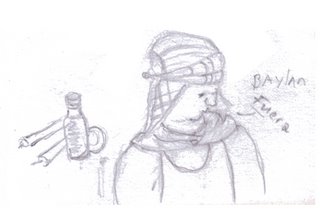
babaylan, baylan or bailan was the name given by the ancient visayans to shamans who are able to communicate with the spirit world. the baybaylan uses incantation, plants, oil infusions, candles, incense or kamanyang for the healing rituals. ancient babaylans were either male or female. antonio de pigafetta, the chronicler of magellan's expedition in 1521, said that the babaylan he saw wore women's skirts even if they were men. i suspect pigafetta mistook the asian wrap around called by various names—the most common being sarong as a dress.
i hadn't seen a babaylan in action until mitzi invited me to go to san joaquin where a baybaylan was scheduled to cure a child. mitzi was doing research on the weaving tradition of iloilo; her work focused on the patadyong weaving tradition.
in the ritual i witnessed, the babaylan wears a turban of red patdyong cloth and spits saying "fuera" as he drives malevolent spirits to effect a cure. in the mountainous areas of panay island, the baybaylans continue to practice their art even if three centuries of colonial rule tried to exterminate this living remnant of ancient religion.
Saturday, June 24, 2006
details of miagao church

built of reddish sandstone, miagao church has the look of a fortified structure, which it was. in colonial times, spanish friars built churches not just for worship but as a refuge in time of attack or in a strong typhoon. but because the church was primarily for prayer and worship, it was embellished. the stone carvings on the surface of Miagao church mitigates its otherwise fortress-like look.

